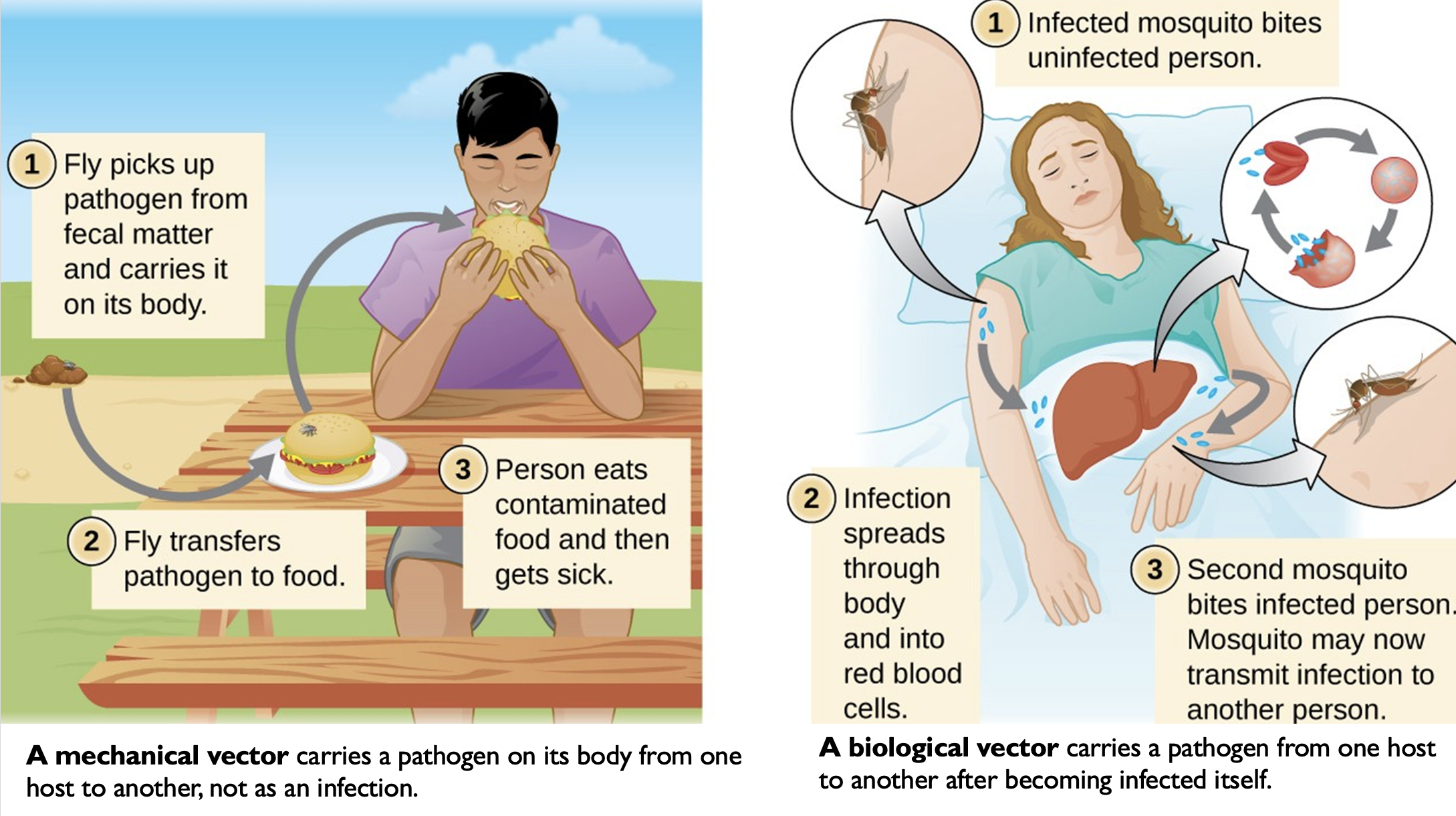Ways Infectious Diseases Spread
- Infectious disease can spread by
- Direct or close contact
- Transmission within 1-2 meters
- Indirect contact
- Transmission outside of 1-2 meters
- Can be on surfaces
- Direct or close contact
- Vectors (organisms that transmit pathogens from an infected host to a susceptible host)
Direct Contact
- Person to person transmission (within 1-2 meters)
- Direct physical contact through kissing, touching, sexual intercourse, etc
- Droplet sprays
- Examples:
- COVID-19, droplets and direct physical contact
- EBOLA, direct contact with bodily fluids, semen
- Note that both COVID-19 and EBOLA can be spread by both direct and indirect contact
Indirect Contact
-
Outside 1-2m
-
Involves:
- Fomites (inanimate objects) become contaminated by pathogens from an infected individual. Transmission to new host via touch and entry into a susceptible portal (e.g. COVID-19)
- Or spreading as aerosols (smaller particles that can travel further), e.g. COVID-19
-
Some pathogens, e.g. measles virus, remain viable in the air for large amounts of time
Vectors
- Diseases can also be transmitted by a vector
- Mechanical vectors
- An animal (typically an arthropod) that carries the pathogen from one host to another without being infected itself, e.g., a bat
- Biological vector
- The pathogen reproduces within a biological vector that transmits the pathogen from one host to another, e.g., mosquito (technically the malaria pathogen)

Controlling Infectious Diseases
- Control of infectious diseases refers to the actions and programs aimed at:
- Reducing the number of new infections
- Reducing disease prevalence
- Completely eradicating the disease
- This can be achieved by:
- Physical precaution measures
- Medication
- Vaccines
Physical Precaution Measures
Washing hands
- Hand washing with soap removes pathogens from hands
- This helps prevent infections because
- People frequently touch their eyes, nose and mouth without even realising it
- Pathogens can be transferred to food and drinks where they can potentially multiply and be ingested
- Preventing spread by indirect contact where pathogens can be transferred to fomites, then to another person’s hands
Wearing Gloves
- Prevent contamination
- ONLY WORK WHEN USED CORRECTLY IN APPROPRIATE CIRCUMSTANCES
- When cleaning and disinfecting the area around the person who is sick or other surfaces that may be frequently touched in the home
- When touching or having contact with blood, stool, or bodily fluids, e.g. saliva, vomit, mucus, urine
- After using disposable gloves, dispose of them
- Wash hands after removing gloves
Wearing Masks
- Masks act as a simple barrier to help prevent respiratory droplets from travelling into the air and onto other people when the person wearing the masks sneezes, coughs, talks, or raises their voice
- Wash hands after handling a used mask